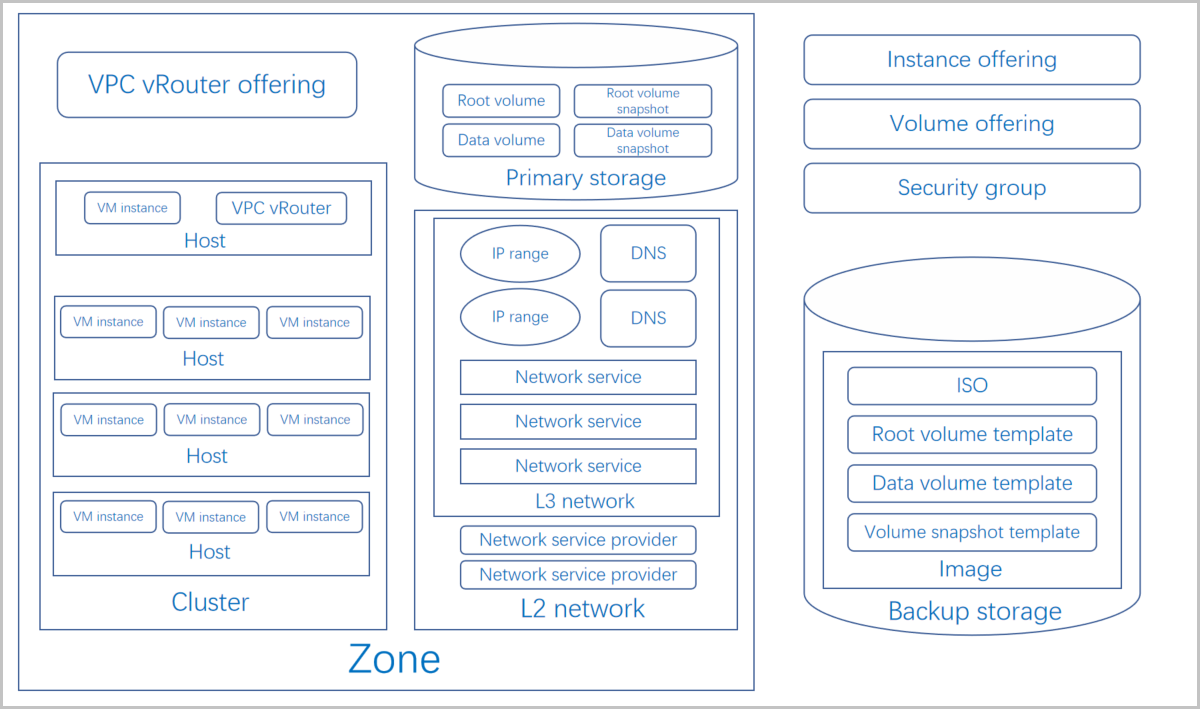- Account Home
- Language
- News
- Products
-
Cases
By Service
- Help & Support
- Partners & Training
- About Us

 Note: Relationship between primary storages and backup storages:
Note: Relationship between primary storages and backup storages:The following properties are common to almost all resources in ZStack Cloud:
Resources in ZStack Cloud support full or partial Create, Read, Update, Delete (CRUD) operations.
A VM instance is a virtual machine instance running on a host. A VM instance has its own IP address and can access public networks and run application services.
Back to Top
Email Us
contact@zstack.ioEmail Us
contact@zstack.ioEmail Us
contact@zstack.ioThe download link is sent to your email address.
If you don't see it, check your spam folder, subscription folder, or AD folder. After receiving the email, click the URL to download the documentation.Thank you for using ZStack products and services.
Submit successfully.
We'll connect soon.Thank you for using ZStack products and services.